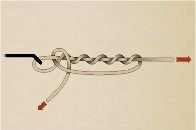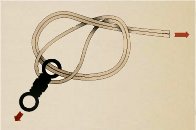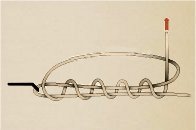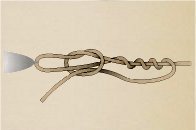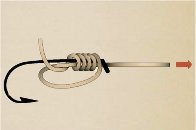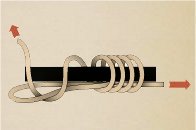“Our added winter moisture and active calling period led to a very long nesting and hatching season, starting in late April and extending into early summer, with chicks hatching as late as early July,” O’Dell said. “From a population standpoint, we are out of a deficit for the first time since 2001-2002. Quail are starting to pop up in places they haven’t been seen in a while.
“If you’ve never had the chance to experience what Arizona quail hunting built its name on, then this would be the year to get out and enjoy it.”
Meanwhile, hunters should note that the season for Mearns’ quail doesn’t begin until Dec. 4. It’s summer rainfall that plays a key role in nesting success and population numbers of this species. After a spotty and relatively weak monsoon across southern Arizona, these birds are likely to be abundant only in pockets that received sufficient precipitation this summer.
A valid Arizona hunting or combination hunt and fish license is required for all hunters 10 and older. Those hunters under 10 must either have a valid hunting or combination hunt and fish license, or be accompanied by an adult who possesses a valid hunting or combination hunt and fish license. Licenses can be purchased online or at license dealers statewide. A youth combination hunt and fish license (ages 10 to 17) is $5.
The general bag limit is 15 quail per day in the aggregate, of which no more than eight may be Mearns’ quail (when the Mearns’ season opens Dec. 4). The general possession limit is 45 quail in the aggregate after opening day, of which no more than 15 Gambel’s, scaled or California quail in the aggregate may be taken in any one day. After the opening of the Mearns’ season, the 45-quail possession limit may include 24 Mearns’ quail, of which no more than eight may be taken in any one day.
More quail-hunting information can be found on the department’s website at https://www.azgfd.com/Hunting/. Another resource for both new and experienced hunters alike is “An Introduction to Hunting Arizona’s Small Game.” Written by Randall D. Babb, the 196-page, full-color book covers where and how to hunt small game birds (like quail), squirrels, rabbits, ducks and geese. It also includes how to prepare and cook your harvest, with illustrations and recipes. The book can be ordered for $16.95 at www.azgfd.gov/publications.
Finally, hunters should check out O’Dell’s techniques for field-dressing quail at https://www.youtube.com/watch?v=3gRwZAcWzzk.
####
Publishers Notes: OUT OF STATE HUNTERS, FISHERMEN & OUTDOOR ENTHUSIASTS; Due to the Covid 19 pandemic, there could be limitations for OUT of STATE hunters, fishermen and other outdoor enthusiasts to include a 14-day quarantine requirement or negative COVID-19 testing alternative. Please check with the State's Department of Natural Resources BEFORE you travel or apply for the 2020 Fall Hunts.
Knots for Hooks, Lures and Rigs
These knots are tested and proven to offer at least 90 percent of the original line strength when tying tackle (lures, swivels, sinkers, bobbers, etc.) to a line.
You don't have to learn all of them. But sometimes learning a complicated knot can be challenging and rewarding. On the other hand, learn the ones you're comfortable with to enjoy your hobby.
The Backcountry Press
There are a large variety of knots for the outdoors including hunting, fishing or boating and each knot has specific properties and suitability for a range of tasks. Some knots are well-adapted to attach to particular objects such as another rope, cleat, ring, or stake. Other knots are made to bind or constrict around an object. Choosing the correct knot for the job at hand is one of the most fundamental aspects of using knots well. (Some Video Instructions are Included)
© 2020 TBC Press - All Rights Reserved Website Design by:
K N O T S
Improved Clinch Knot -- click for step by step video
The improved clinch knot is a knot that is used for securing a fishing line to the fishing lure, but can also affix fishing line to a swivel, clip, or artificial fly.
It offers up to 95 percent of the original line strength. The key is to make five turns of the tag end around the standing end before running the tag end back through the formed loop.
As always, start with plenty of line. This knot is fairly quick and easy to tie and really popular. Use for lines up to 20-pound test.
Palomar Knot -- Click for Step by Step Video
It's two knots tied back to back, then placed together to form a strong connection. Leave plenty of line at the end of the knot on each piece of line you're joining. The ends help pull the two knots into one. Clip ends short after the double knot is created.
Uni or Hangman's Knot -- click to see step by step video
One of the most reliable knots for tying an eyed hook to a leader, the Uni Knot is effective with most types and sizes of line. Don't be afraid to cut the end short. It'll hold.
Non-Slip Loop Knot
It creates a fixed loop so a hook can move freely. It is best with larger lines where a tight knot, such as the Improved Clinch can impede hook, bait or lure movement.
Snelling an Eyed Hook
Snelling means tying the knot away from the eye of the hook. It's used often in sea fishing, but works well for any type of fishing to increase strength and improve catch rates with bigger fish.
Snelling a Hook -- click for step by step video
A spade hook has no eye. So you have to tie a knot next to the flat, bent end of the hook shank. Spade hooks are small. So don't worry, it will hold.










